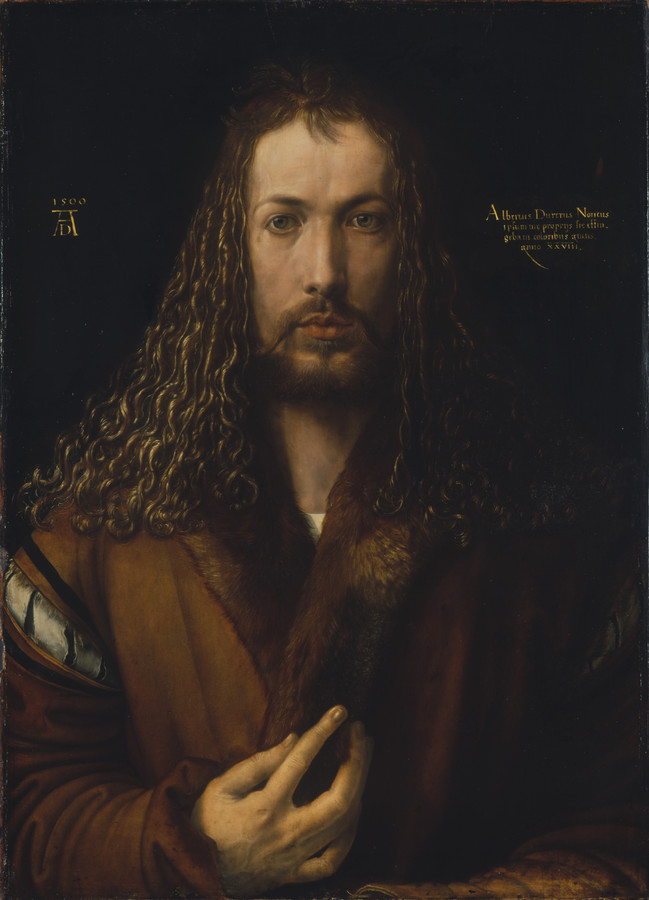In this occasional series, Fine Art Today delves into the world of portraiture, highlighting historical and contemporary examples of superb quality and skill. This week we consider one of the most important self-portraits ever created.
Albrecht Dürer was undoubtedly one of the most spectacular and accomplished artists of the Renaissance. Indeed, his iconic “Self-Portrait” from the year 1500 is one of the most significant self-images ever produced.
It is often suggested by scholars that Durer’s 1500 self-portrait depicts the artist in the guise of Christ Pantocrator, and it has come to represent one of the first explicit visualizations of how artists viewed themselves as craftsmen inspired by God. As foremost German Renaissance scholar Joseph Leo Koerner writes, the painting is “formalized so as to display its underlying construction almost in the manner of an architectural front elevation.” He adds, “[S]et off against a neutral ground, the 1500 likeness is less a body in a setting than a principle of pictorial order consubstantial with the visual image itself.”1
The deep symbolism, semiology, proportions, and ratios Dürer manipulated in the self-portrait were extraordinarily original and radical for the time. The picture is not just a visual representation, but something beyond appearance and status, something that gave the viewer “access to an interior self and reflected the underlying idea of painting itself: art is the image of its maker.”2
Today, the brilliant oil is located at the Alte Pinakothek in Munich, Germany. To learn more about this extraordinary portrait, visit Alte Pinakothek.
1 Joseph Leo Koerner, The Moment of Self-Portraiture in German Renaissance Art, (Chicago UP, 1993): 63.
2 Omar Calabrese, Artists’ Self-Portraits, 1st ed. (New York: Abbeville Press, 2006): 18.
This article was featured in Fine Art Today, a weekly e-newsletter from Fine Art Connoisseur magazine. To start receiving Fine Art Today for free, click here.









But it does not come up with a large amount of sense that Durer will be
copying the Italian artists in this manner for he was just a regional artist at this point in time.
It can be difficult to find one person in the western world that would not like
no less than one genre of music. See if the website provides secure shopping and secured online
purchases.